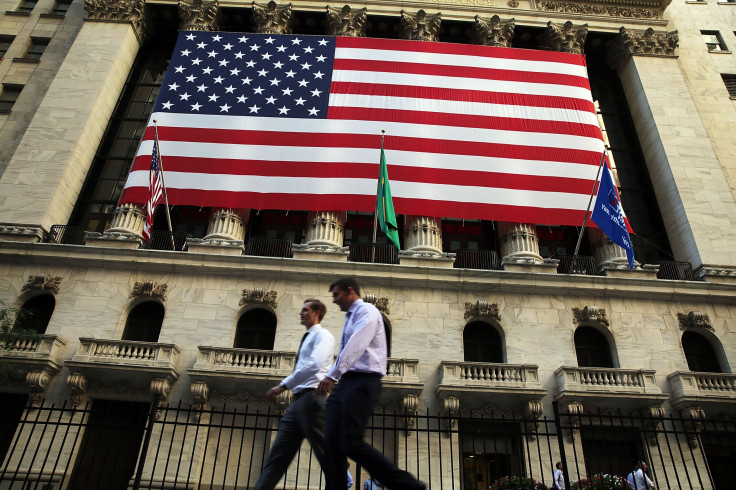Finding Venture Capital Far From The Coasts

In his latest investment round, William Paiva poured money into an electrocardiogram administered via smartphone, a sickle-cell anemia treatment and a smoke alarm for the hearing-impaired. His portfolio is befitting of biotech’s birthplace in Cambridge, Massachusetts, or the tech hub of Silicon Valley. But Paiva manages the Oklahoma Life Science Fund in Oklahoma City, equidistant from Los Angeles and Washington.
As a local investor in the heart of America, Paiva offers early support for homegrown and potentially high-growth businesses that is crucial. The vast majority of money that venture capitalists invest in the U.S. clings to the coasts. In 2014, Oklahoma was home to just 0.18 percent of the 4,356 venture capital deals struck nationwide. Without investors such as Paiva, Oklahoma life sciences companies would have an even harder time raising funds.
“The reality is venture capital is a local industry,” he says.
VC Concentrated in 5 States
In 2014, investors spent $48.3 billion in venture capital. Just five states received 80 percent of those dollars. California companies received a staggering 56 percent of the total. The tendency of venture capital to remain tightly concentrated in coastal states such as New York, Massachusetts and California has accelerated in the past 15 years even though the majority of Americans — presumably among them many with viable business plans — live elsewhere.
There are likely several reasons for this uneven distribution. One is that most investors are based on the coasts and still prefer to work face to face with the companies they support. They also like to invest alongside nearby partners whom they trust.
Another might be an inherent bias against rural or inland states. John Burns, managing director at Maine Venture Fund, says he often hears stereotypes about Maine that limit investors’ willingness to back companies there. “They have this vision of Maine as far away and off in the cold and unpopulated,” he says. “I do run into that.”
Lately venture firms have also become larger, which means they’re less willing to fund small rounds. This means companies that aren’t in the traditional VC capitals of San Francisco, Boston, Silicon Valley or New York must look elsewhere to raise early dollars.
But increasingly, venture capital is flowing to places such as Oklahoma, Maine, Indiana and Virginia. At least 160 cities received some venture capital in 2014, which is more than at any other point in the past five years. This trend has been driven by two underlying trends: Angel investing has become mainstream and states have launched their own investment funds to fill the gap.
Kristian Andersen, an investor who founded a tech-focused seed-funding firm in Indianapolis called Gravity Ventures, says the number of angel investors in the city has grown from 15 to “hundreds” in the past eight years. Last year, 30 wealthy residents formed the Charlottesville Angel Network in Virginia. A similar group called the Maine Angels boasts more than 65 members.
States have also created their own investment funds to boost their economies by offering venture capital to local companies. In Oklahoma City, Devon Sauzek serves as president of the Oklahoma Capital Investment Board; it has supported 19 other venture funds including Paiva’s, which have invested in 36 Oklahoma companies. Since the fund was created in 1993, it has achieved a 63:1 ratio of economic benefit versus costs.
Co-Investors for Bigger Funds
In Maine, Burns’ fund started in 1995 with $13 million from the Legislature. It recently backed the fast-growing outdoor manufacturer Hyperlite Mountain Gear, headquartered in the town of Biddeford, and an app company called Chimani in Portland, which recently announced a partnership with Google.
These funds often serve as a “co-investor” for bigger funds on the coasts, completing due diligence and checking in on a company’s progress. Enjoying access to strong sources of local funding also means companies are often further along when they start to raise funds elsewhere.
“Those groups have had a significant impact in giving credibility to deals that are off the traditional grid,” says Philippe Sommer, former director of the Center for Entrepreneurial Leadership at the University of Virginia in Charlottesville.

But even with these improvements, businesses off the beaten path still have a harder time raising capital than their counterparts on the coasts. Sommer says the best ideas will be funded regardless of where they are, but many more mediocre or even bad deals are funded in places such as San Francisco that are awash in funding than in Charlottesville, where money is scarce.
Paiva, too, remains confident that the best deals will always be funded. He says frothy coastal markets actually make it easier for companies elsewhere to earn investment because they offer better value. But Paiva warns that once a local company does find an investor, the investors often ask its leaders to pack up and move to the coasts.
Coming Home
However, Sommers in Virginia also says he has noticed something unusual lately. Some of his students have returned to Charlottesville from San Francisco, suggesting that Virginia may prove its own competitive value. This is particularly true since the rising cost of living in San Francisco rendered it the nation's third most expensive city according to the financial services firm Kiplinger.
“When you ask them, ‘Why are you moving back?’ They say, ‘It's too competitive out there. The money’s too competitive, everybody's undermining everybody else, access to talent is so difficult,’” he says. “That didn’t happen five years ago. It's become really, really aggressive out there.”
© Copyright IBTimes 2025. All rights reserved.






















